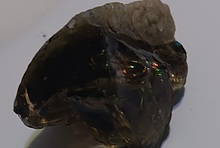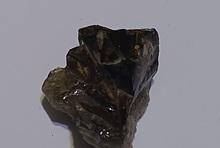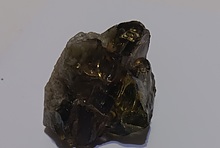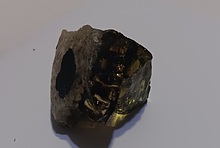Home PageAbout MindatThe Mindat ManualHistory of MindatCopyright StatusWho We AreContact UsAdvertise on Mindat
Donate to MindatCorporate SponsorshipSponsor a PageSponsored PagesMindat AdvertisersAdvertise on Mindat
Learning CenterWhat is a mineral?The most common minerals on earthInformation for EducatorsMindat ArticlesThe ElementsThe Rock H. Currier Digital LibraryGeologic Time
Minerals by PropertiesMinerals by ChemistryAdvanced Locality SearchRandom MineralRandom LocalitySearch by minIDLocalities Near MeSearch ArticlesSearch GlossaryMore Search Options
The Mindat ManualAdd a New PhotoRate PhotosLocality Edit ReportCoordinate Completion ReportAdd Glossary Item
Mining CompaniesStatisticsUsersMineral MuseumsClubs & OrganizationsMineral Shows & EventsThe Mindat DirectoryDevice SettingsThe Mineral Quiz
Photo SearchPhoto GalleriesSearch by ColorNew Photos TodayNew Photos YesterdayMembers' Photo GalleriesPast Photo of the Day GalleryPhotography
╳Discussions
💬 Home🔎 Search📅 LatestGroups
EducationOpen discussion area.Fakes & FraudsOpen discussion area.Field CollectingOpen discussion area.FossilsOpen discussion area.Gems and GemologyOpen discussion area.GeneralOpen discussion area.How to ContributeOpen discussion area.Identity HelpOpen discussion area.Improving Mindat.orgOpen discussion area.LocalitiesOpen discussion area.Lost and Stolen SpecimensOpen discussion area.MarketplaceOpen discussion area.MeteoritesOpen discussion area.Mindat ProductsOpen discussion area.Mineral ExchangesOpen discussion area.Mineral PhotographyOpen discussion area.Mineral ShowsOpen discussion area.Mineralogical ClassificationOpen discussion area.Mineralogy CourseOpen discussion area.MineralsOpen discussion area.Minerals and MuseumsOpen discussion area.PhotosOpen discussion area.Techniques for CollectorsOpen discussion area.The Rock H. Currier Digital LibraryOpen discussion area.UV MineralsOpen discussion area.Recent Images in Discussions
GeneralMicroscope Help :-)
10th Jun 2012 14:48 UTCMatt Wall
I need help with choosing a microscope for looking at some of the smaller, rarer Uranium minerals. I have spoken to Stephan Wolfsried (the microscope saint) and he says a stereo microscope is best. He says he got a "sponsorship contract" (or something similar) when he was about 16 years old (my age), but I don't want to pursue the matter that far into becoming a job-type-thing.
Does anyone know of a good decent stereo microscope for under roughly £120 ($150), as I only want to admire the minerals, not properly analyze them etc.
Also, can you take images through a microscope with a normal camera (Nikon S6100) or do you need an attachment-thing?
Thanks a lot guys, I hope someone can help me out!
Kind regards,
Matt. :-)

10th Jun 2012 15:35 UTCDonald Peck
You really do want a stereomicroscope, as it provides a view of the 3rd dimension. I would recommend a zoom focus with a max of about 50x 0r 60x. Once one gets above about 40x the depth of field begins to disappear so higher magnification is rarely useful. You might try the used market for a scope (especially a first one). You would get more scope for your money, but be sure to try it before you purchase it (or that the seller has a good return policy). And, yes you need a means of attaching the camera if you wish to photograph micro minerals.
10th Jun 2012 15:51 UTCReiner Mielke Expert
10th Jun 2012 15:58 UTCMatt Wall
What attachment would be needed for a camera to take micro-photos?
Regards,
Matt. =)
10th Jun 2012 16:06 UTCMatt Wall
Would this "scope" be any good from AM Scopes:
http://store.amscope.com/sh-2b-dk.html
Thanks for the website,
regards,
Matt. =)
10th Jun 2012 16:30 UTCReiner Mielke Expert
Looks like the one I bought except mine was not a zoom. I am very pleased with mine. However I don't use mine for any serious photography although you can buy adapters from that company that will allow you to shoot through one of the eye pieces.
Reiner

10th Jun 2012 18:02 UTCBob Hembree
You might want to consider a digital micro scope. I have both types and for just looking at specimens and taking pictures the digital is good. My digital is from a company named Dino-Lite, they have a wide range of models that will fit you budget. Their website is http://www.dino-lite.com/ , nice thing about these microscopes is you can take pictures digitally without a camera. Just hook up to a computer.
Regards,
Bob Hembree
10th Jun 2012 21:21 UTCMichael Shaw Expert
I have been using a binocular zoom microscope from Amscope for the past year and I'm very pleased with it. It is a decent scope without breaking the bank. If you are considering purchasing one of their scopes, I would encourage you to look at the Model SM-1T. The price is similar to the model you mentioned, and from what you have described as your needs from a microscope, I don't think you would need the darkfield option. The stand on the SM-1T makes it easier to look at various size minerals and the third tube allows for attaching a camera.
Mike Shaw
10th Jun 2012 21:45 UTCMatt Wall
Kind regards,
Matt. =)
11th Jun 2012 00:21 UTCOwen Lewis
-------------------------------------------------------
> Does anyone know of a good decent stereo
> microscope for under roughly £120 ($150), as I
> only want to admire the minerals, not properly
> analyze them etc.
> Also, can you take images through a microscope
> with a normal camera (Nikon S6100) or do you need
> an attachment-thing?
Matt,
Donald's advice is excellent but your constraints are: (1) the cash available, and (2) the difficulty in picking a good s/h unit when this is your first experience in microscopy.
At least give the following some thought as a mind-clearing exercise before you spend you money.
1. Having a photomicroscopy rig won't help you see any more or learn any faster, All it will do is to let you build an archive of what you have seen and to share some of those images with others.
2.Zoom is really nice - but its *not* an absolute essential. On a really tight budget, you will get the most bang for your buck with a turret 'scope that lets you switch between objective lenses to give different levels of magnification in just one or two steps - 'cos they are simpler and cheaper to build.
3. When you have paid for your scope, that is not the end of the matter. You will see more and better with additional lighting (and knowing how to use it) rather than sticking with just the lighting provided with an 'entry-level' 'scope. This is particularly true for the examination of transparent crystals and peering inside them. And that additional lighting is not dirt-cheap.
If pictures are important to you and given your budget constraint, go with the Dinolite! You can learn a lot for very little outlay and have great fun too. If the bug bites you badly, start saving your cash. A war-chest of $xxxx should be your aim and $xxxxx is not hard spend either, if youmust have the best. But the Dinolite will let you find out if your interest takes hold sufficiently to warrant that sort of expense. Depending on where your interests lead, you may end up with more than one microscope for different tasks!
My interest in microscopy started when I was younger than you, with a little hand-held field microscope. Cheap and a real eye-opener - but no good for examining most minerals though :-(
Best of luck - and keep asking questions.....
11th Jun 2012 08:32 UTCMatt Wall
I am just emailing AM Scope now to ask them what they think. =)
Thanks again,
Matt. =)




Mindat.org is an outreach project of the Hudson Institute of Mineralogy, a 501(c)(3) not-for-profit organization.
Copyright © mindat.org and the Hudson Institute of Mineralogy 1993-2024, except where stated. Most political location boundaries are © OpenStreetMap contributors. Mindat.org relies on the contributions of thousands of members and supporters. Founded in 2000 by Jolyon Ralph.
Privacy Policy - Terms & Conditions - Contact Us / DMCA issues - Report a bug/vulnerability Current server date and time: April 19, 2024 14:31:10
Copyright © mindat.org and the Hudson Institute of Mineralogy 1993-2024, except where stated. Most political location boundaries are © OpenStreetMap contributors. Mindat.org relies on the contributions of thousands of members and supporters. Founded in 2000 by Jolyon Ralph.
Privacy Policy - Terms & Conditions - Contact Us / DMCA issues - Report a bug/vulnerability Current server date and time: April 19, 2024 14:31:10










